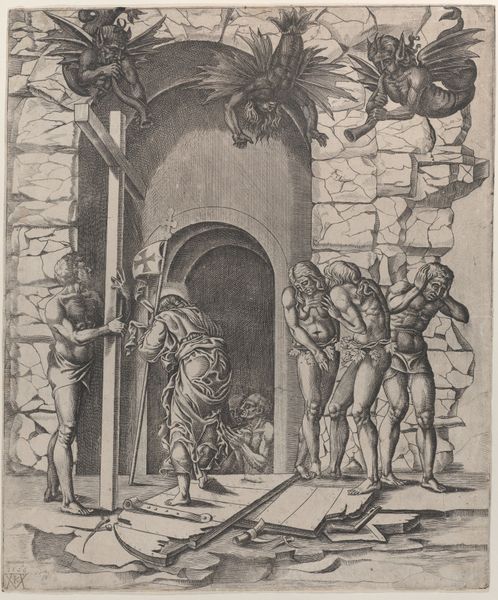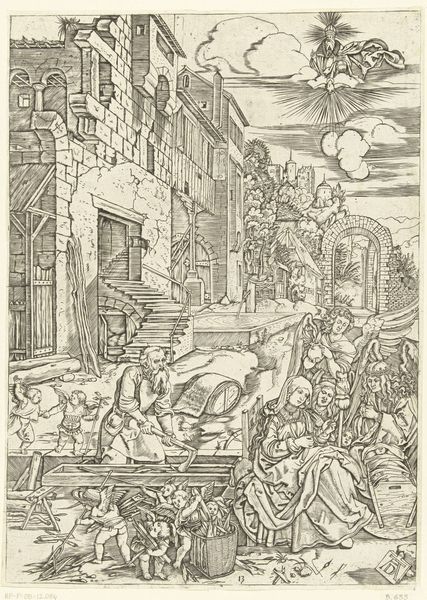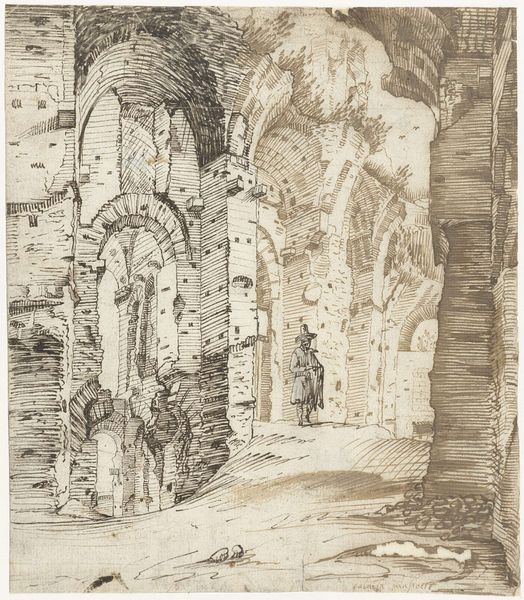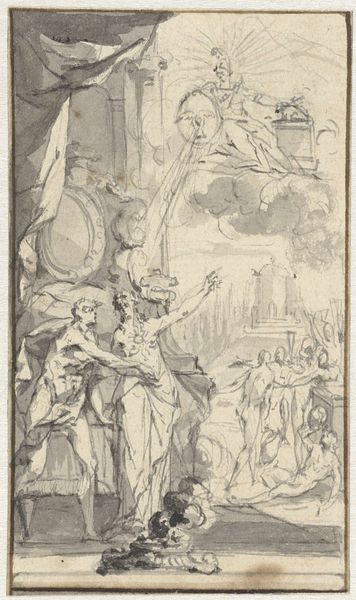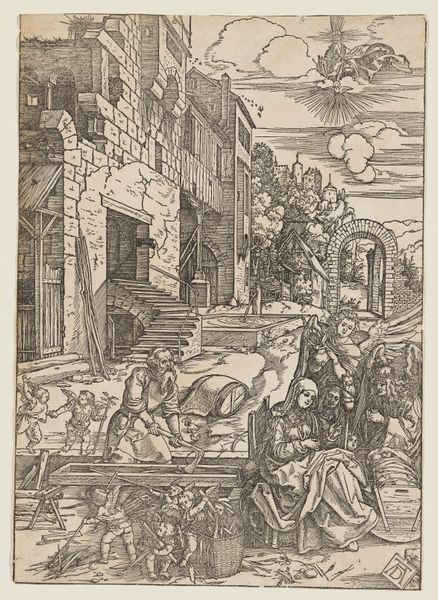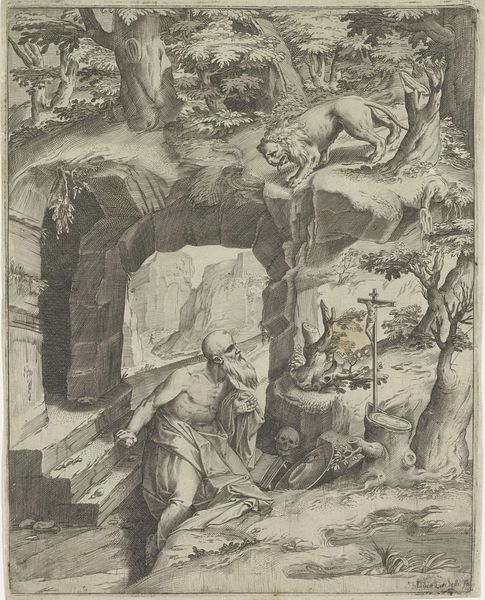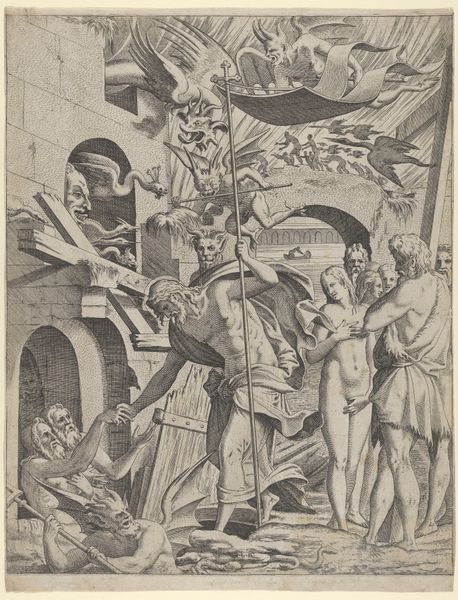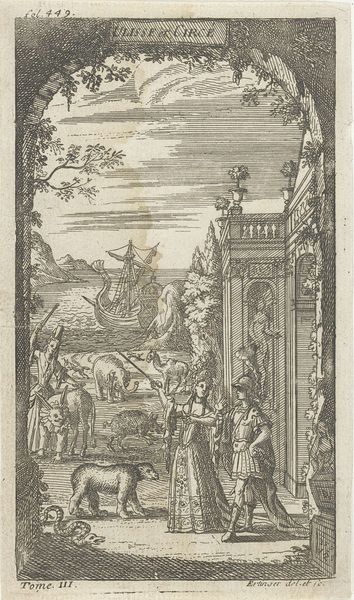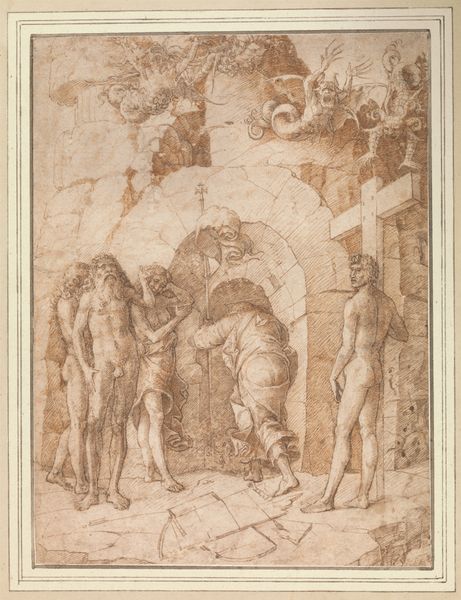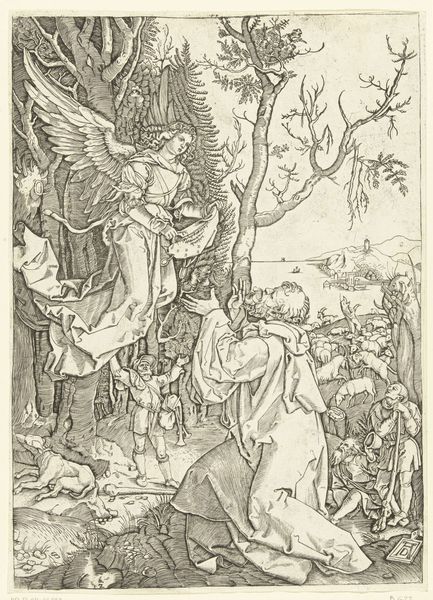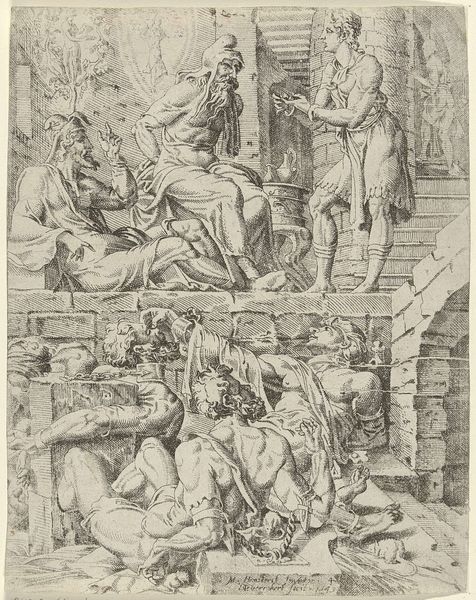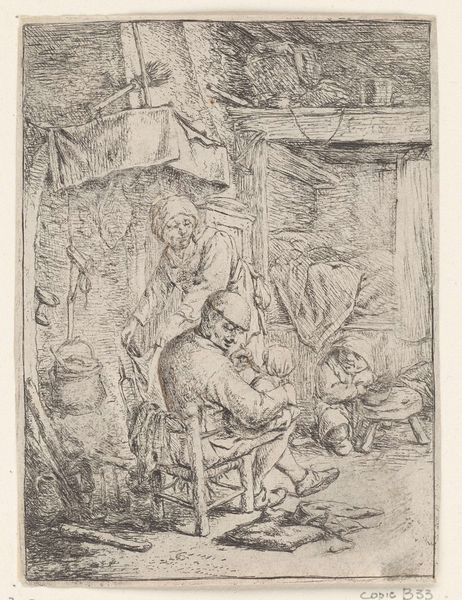
engraving
#
old engraving style
#
figuration
#
11_renaissance
#
line
#
history-painting
#
italian-renaissance
#
engraving
Dimensions: height 421 mm, width 340 mm
Copyright: Rijks Museum: Open Domain
Andrea Mantegna made this print, Christus daalt af in voorgeborchte, using the intaglio process of engraving. Mantegna would have used a tool called a burin to manually incise lines into a copper plate. The depth and spacing of these lines determined the tones and details of the print. Look closely, and you can see how the density of lines creates shadow and volume, shaping the figures and dramatic landscape. The physical act of engraving demands precision and control, transforming metal into a matrix for reproduction. This was a laborious process. Prints like this one played a crucial role in disseminating artistic ideas and imagery across Europe, making art more accessible beyond the elite circles of patronage. This particular image would have allowed a wider audience to contemplate religious narratives, while also appreciating the skill required to produce such a detailed engraving. The material, the process, and the social context all intertwine, challenging traditional distinctions between art, craft, and industry.
Comments
No comments
Be the first to comment and join the conversation on the ultimate creative platform.

